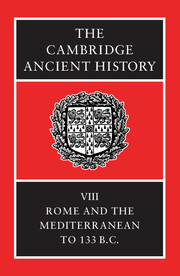
- Cited by 10
-
Cited byCrossref Citations
This Book has been cited by the following publications. This list is generated based on data provided by Crossref.
Wiedemann, Thomas 1991. Roman History. Greece and Rome, Vol. 38, Issue. 1, p. 101.
2005. A Companion to Latin Literature. p. 406.
2006. A Companion to the Roman Republic. p. 638.
2007. A Companion to Roman Rhetoric. p. 451.
Hoyos, Dexter 2011. The Encyclopedia of War.
Hoyos, Dexter 2011. The Encyclopedia of War.
Deshours, Nadine 2011. L’été indien de la religion civique. p. 363.
2012. Proconsuls. p. 23.
2013. The Rise of Gay Rights and the Fall of the British Empire. p. 40.
Hoyos, Dexter 2018. The Encyclopedia of Diplomacy. p. 1.
- Publisher:
- Cambridge University Press
- Online publication date:
- March 2008
- Print publication year:
- 1989
- Online ISBN:
- 9781139054362
- Subjects:
- Ancient History, Classical Studies
- Collection:
- Cambridge Histories - Ancient History & Classics
- Series:
- The Cambridge Ancient History


